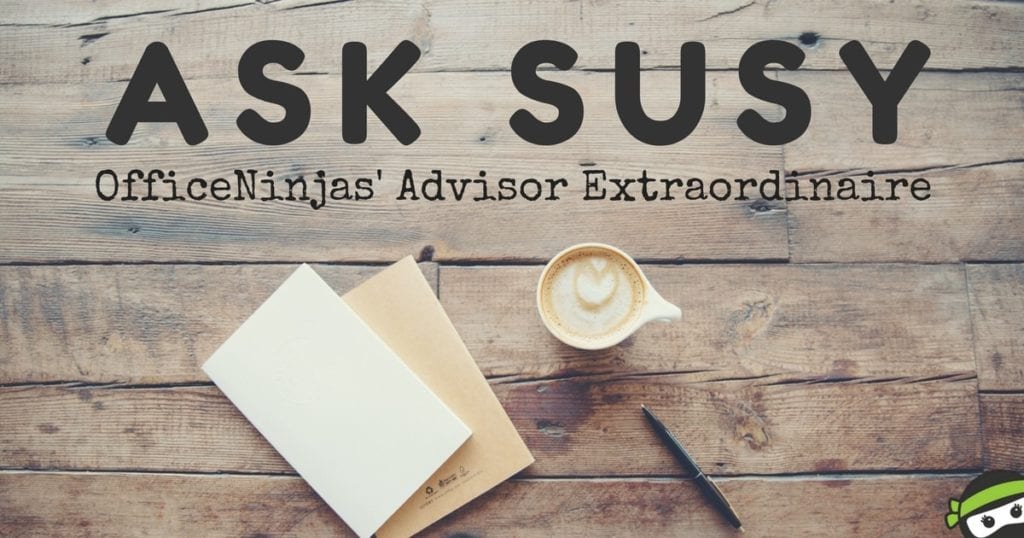How to Plan Anti-Harassment Training That’s Fun & Serious at the Same Time

Dear Susy,
We are doing research on creating effective anti-harassment training for employees and supervisors. I was curious about whether you have any tips on making training more engaging and fun while also demonstrating the importance of creating a safe environment. All your help would be appreciated!
– Threatened by Boredom
Organizing training programs can be like trying to convince yourself to schedule that overdue dentist appointment—it’s important for the health of your pearly whites, but the thought of drills and picks dancing around your mouth makes you hold off. Successfully gathering employees for anti-harassment training, then actually creating an effective session is similarly daunting—but it’s necessary.
Ninja, per usual, you’re one step ahead—immediately thinking about how to create the best darn training session possible. It sounds like you understand the topic’s seriousness, but also know that the information must be retainable and engaging.
Let’s ensure they remember every word. I tapped an expert in employee training and organizational development for some perspective. Use this advice, and you’ll be so engaging, your employees won’t even look at their phones!
How to Plan Engaging Anti-Harassment Programs
When planning training around a subject as sensitive as harassment, cover what matters. Mike Donnelly, the ex-Disney exec and CEO of Donnelly Effect, reminds us that “what’s funny for some is not funny for others. The stakes are higher, so focus on being pleasant and engaging rather than the subject of fun or humor.”
Remember that the ultimate goal here is to raise awareness while focusing on workplace accountability. I suggest you err on the side of caution when it comes to incorporating fun and humor.
Talk is Cheap
That said, people don’t like to be bored. Most of us have the attention span of a gnat and will zone out fast. Avoid the trap of talking at your audience—it can lead to grade-school flashbacks and a boring afternoon of lessons. Make training interactive to engage instead.
Implement a schedule that encourages debate and active discussion to bring cloudy issues back down to earth. Ask questions or break into smaller groups that allow for realistic dialogue.
Mike says incorporating real-life scenarios specific to your company will help make training interesting. When building scenarios, think about your organization’s lingo, nomenclatures, and experiences employees might encounter on a daily basis.
Empty words and flat messages are the quickest way to lose a crowd. But if you create examples set in your office coffee lounge, employees can apply the information to an environment they know, making advice more practical. Just use imaginary characters in this real-life setting!
Use Media
It’s always smart to use a PowerPoint slide to help guide the program and focus attention, but how you incorporate fun largely depends on the culture you promote outside of mandatory training days. If your company is a bit quirky, consider creating a short intro video featuring a few of your co-workers.
Before you panic, I don’t mean a video showcasing Tom in IT actually catcalling Tina in marketing. Nor do I suggest downplaying the seriousness of the subject matter. Consider highlighting hidden acting talents companywide in a “Why Anti-Harassment Training Matters” video to set the tone. A short segment introducing the afternoon’s topics might ease the tension surrounding a subject that often remains taboo.
If your Human Resources personnel are willing, substitute those standard-issue training vids and replace them with taped interviews that include your HR staff and supervisors. Have them weigh in with the best way to handle harassment or report unethical situations. These tactics help keep the subject relatable and hold engagement during the presentation.
We’ve all attended boring training sessions. We’ve cleared our afternoons for facilitators to come in unprepared with no ground-breaking information. This won’t happen to you, Ninja, since you’ve already slashed the issue by being proactive. If you can remember to treat the session as an active, guided discussion, your audience will be ready to debate the topic all afternoon.
Want to weigh in about a knock-out training you’ve planned (or attended) in the past? Let’s hear it!